Based on responses from 28 hearing care experts, Apple’s entry into hearing health presents immediate practice implications and long-term industry considerations. While 89% believe this will increase public awareness about hearing health, practitioners are divided on how it will affect patient flow and practice dynamics. This comprehensive analysis combines expert insights with practical implications for hearing care practices.
Current Industry Sentiment
Level of Awareness and Experience
Of the surveyed experts:
- 14% are “Very Familiar” with Apple’s new features
- 32% are “Somewhat Familiar”
- 29% are “Not Very Familiar”
- 25% are “Not at all Familiar”
Only 7% of respondents have personally tried the new features, highlighting a need for increased professional engagement with these technologies. This limited hands-on experience suggests a substantial opportunity for professional development and technology familiarization initiatives.
As Apple continues to innovate, it will become increasingly important for industry professionals to stay informed and gain practical experience with these advancements to remain competitive and leverage the full potential of these new tools in their respective fields.
Expected Impact on Service Demand
The survey results reveal a nuanced perspective on the expected impact of new features on service demand across the industry:
- Increase Demand: 43%
- No Significant Change: 18%
- Decrease Demand: 7%
- Unsure: 32%
The most interesting aspect of the data is the considerable 32% who remain unsure about the potential impact, indicating a level of uncertainty and complexity surrounding the technological developments. This uncertainty underscores the need for further market research, detailed analysis, and strategic planning to better understand the potential service demand dynamics.
The varied expectations highlight the dynamic and evolving nature of the industry, where technological innovations can create both opportunities and challenges for service providers.
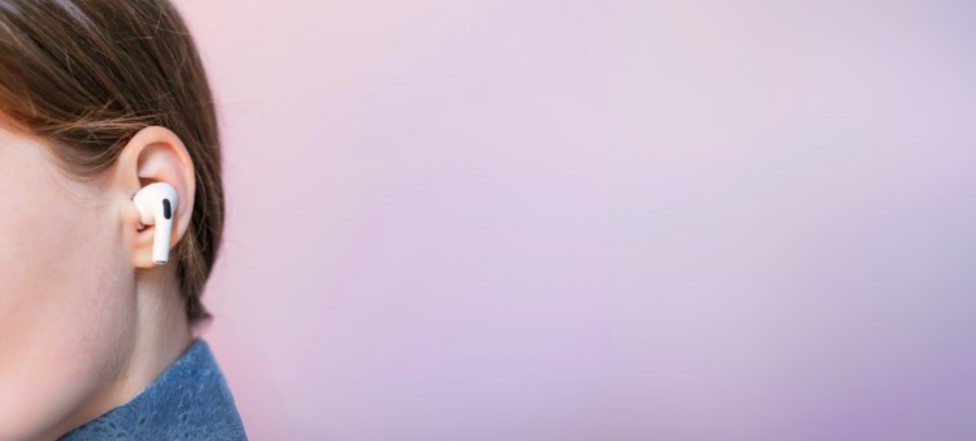
Practice Management Implications
Patient Flow & Conversion
Several experts anticipate increased patient interest but with specific challenges. One noted key opportunities to “educate consumers about audiology, benefits of full audiological evaluations, custom earmolds, and hearing devices,” while noting the challenge of “hearing aid consumers turning away from or delaying hearing aid purchases.”
Dr. Amit Gosalia of West Valley Hearing Center provides a comprehensive analysis of potential patient segments:
“The consumers who choose to purchase and use Airpods as their medical device, probably won’t see an audiologist to begin with. We shouldn’t lose any sleep over them. I believe there are three types of patients who would use AirPods as a medical device. First is the consumer who is denying or fighting their hearing issues and chooses the easiest way out to satisfy the loved ones who are complaining about their hearing loss. Second is the consumer who wants to try an OTC from a familiar and trusted company, which for the most part, Apple fits the bill. Third is the consumer who doesn’t know better and will confuse a consumer electronic device as a medical device. All three are opportunities for audiologists to educate and help these consumers. In 2020 when the over the counter bill passed, there was a spike in ‘prescription’ hearing aids sold. I would like to think the free advertising helped!”
Patient Education and Counseling
Multiple experts emphasize the increasing importance of patient education. One respondent noted practices should be prepared for “more counseling on what prescriptive hearing aids involve.” Jason Wigand from Beach Audiology Hearing & Balance Center highlights the need for “explaining how it works to patients. Describing the benefits and limitations. Educating the patient on why their individual hearing loss needs more support and advanced solutions.”
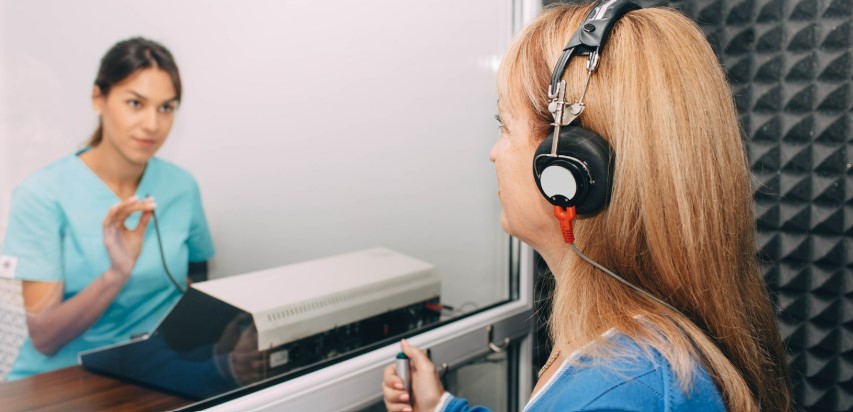
Kathryn Armstrong from Armstrong Hearing anticipates “increased counseling” needs. Another respondent warns that “consumers may misuse these devices and either increase their hearing deficit or not provide enough amplification and give up.” Dr. Sheryll L. Bonness an Educational Audiologist from the Detroit Public Schools Community District provides a valuable analogy for patient education: “Some might think that it’s as easy as choosing bifocals on the pharmacy rack; a small number of people might find that’s the case. The rest won’t know until they hear a properly fitted digital hearing aid with all the wonderful features programmed in, based on their particular hearing loss and situation.”
Economic Considerations
The survey revealed several business implications. One respondent predicts this “may cause retail prescription hearing aid prices to decrease.” Tina Jupiter identifies a key challenge: “People may be interested in obtaining an audiogram from an audiologist after they use the Apple. Or they may be interested in obtaining an audiogram before they purchase the iPhone and earbuds. There may be an increased awareness of the benefits of amplification and obtaining hearing aids. The challenge of moving individuals from using earbuds that cost $275.00 to hearing aids that cost more.”
Professional Practice Evolution
Changing Role of Practitioners
Several experts see this as a catalyst for professional evolution. Emily from Richmond VAMC notes practitioners need to focus on “getting over their egos to help patients.” Dr. Michael Skelton from Northern Arizona University suggests a fundamental transformation “from a dispensing service focused field into an aural re/habilitation counseling field.”
Kevin S. Ballard from Quincy Audiology, LLC maintains that “as with other OTC devices, people will continue to use us as a resource for accurate information.”
Gateway Effect
Multiple experts see Apple’s features as a stepping stone to professional care. Scott DeWitt from Modern Audiology Centennial stated “More patients who find benefit from using Air Pods 2 as hearing aids will likely see the value in pursuing advanced technology with the assistance of a professional to do even better. This should tap into a base of patients we may not have reached before.” Louis Sieminski expresses optimism: “If it helps to get more people to investigate a possible hearing loss and to seek a solution it would be fantastic.” Dr. Michael Skelton notes that “this product could become a great gateway technology towards getting patients to be interested in wearing hearing aids sooner.”
Technical and Clinical Considerations
Performance Limitations
 Dr. Amit Gosalia shares important technical insights: “Our recent informal research found the Airpods underperformed in our verification studies and subjectively, did not sound very good.” He emphasizes professional standards: “If we as a profession are looking for the best hearing care possible for our patients, we must follow best practices or you are no different than a pair of Airpods.”
Dr. Amit Gosalia shares important technical insights: “Our recent informal research found the Airpods underperformed in our verification studies and subjectively, did not sound very good.” He emphasizes professional standards: “If we as a profession are looking for the best hearing care possible for our patients, we must follow best practices or you are no different than a pair of Airpods.”
Another audiologist raises practical concerns: “The challenge may be for significant losses to have success with the device and then may not want to seek professional help.” They also note physical fit issues: “What happens when they fall out of ears? I can’t wear AirPods because they fall out all the time. It’s too stressful to wear them, have them fall out and look for them.”
Implementation Challenges
Several experts identify specific challenges. Jack Adams from Audiology Consultants of Southwest Florida anticipates the “aggravation of dealing with people that try them and can’t figure out how to use them or complain that they tried and they don’t work.” David Taylor from Ears to You Audiology warns that “the client may presume that the Apple hearing aid features provide the best possible performance.” Emily from Optum Serve cautions that “people may not want to try hearing aids if they have a bad experience with Apple iPod hearing aid features.”
Market Impact and Opportunities
Demographics and Awareness
Experts see the potential for market expansion. Lindsey Koble from Audiology Always anticipates these features will “bring in a younger crowd who is now concerned about hearing health.” Lori Boyd from the Center for Hearing and Balance notes: “It will raise awareness among a new, younger demographic of individuals who could use our expertise. If not now, they will come in the future due to more awareness.” Ellen Simon of HEAR Center observes there will be “more questions and more interest.”
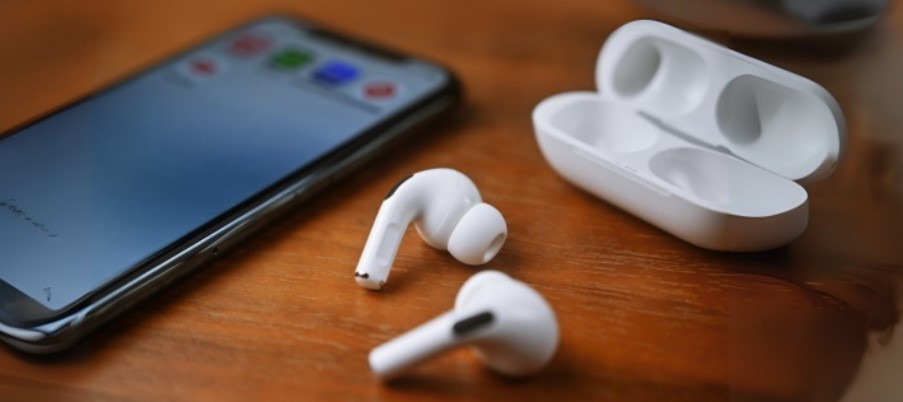
Market Positioning
Robert Traynor of Robert Traynor Audiology believes this will primarily “affect the OTC market” and ultimately “increase the need for audiologists.” Another respondent identified a positive trend toward the “continued erosion of hearing aid stigma. Hearing aids can be ‘cool’,” suggesting new marketing opportunities.
Integration and Technical Considerations
Technical Integration
Tina Jupiter raises important questions about integration, “Is there a way that an audiogram can be uploaded onto the Apple iPhone to be used with the earbuds? Marketing…provide information related to using the features that will be beneficial.”
Looking Ahead
Dr. Amit Gosalia concludes with an important perspective on the future: “There should be a natural progression for these consumers to become our patients. As an audiologist, I can only hope these folks will find appropriate medical care and don’t settle for mediocrity. Be open about the positives, like the advantages of visiting an audiologist versus being negative and dismissing devices such as the Apple Airpods.”
As he notes, “A rising tide lifts all ships and it’s time to raise the audiology tide.” Success in this evolving landscape will require practices to embrace change while communicating their unique value proposition and maintaining high professional standards.
Key Survey Insights
Survey Demographics and Response Patterns
Familiarity Distribution
The familiarity distribution among industry professionals regarding Apple’s new hearing-related features reveals a diverse range of knowledge levels.
- Very Familiar: 14%
- Somewhat Familiar: 32%
- Not Very Familiar: 29%
- Not at all Familiar: 25%
Experience with Features
The data on personal experience with the features is particularly telling, as only 7% of respondents have tried the hearing test or hearing aid features, both of whom rated themselves as “Very Familiar” with the technology. This low rate of hands-on experience may explain the limited patient inquiries reported by the majority of respondents
Patient Inquiries
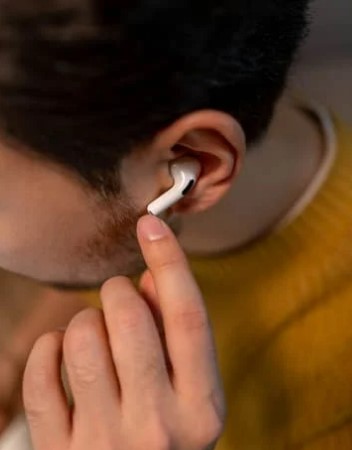 A substantial 64% of professionals have received no inquiries about these features, while 29% report few inquiries. Only 7% have fielded many inquiries, suggesting that while the technology exists, it has not yet gained significant traction among patients or sparked widespread curiosity in the market.
A substantial 64% of professionals have received no inquiries about these features, while 29% report few inquiries. Only 7% have fielded many inquiries, suggesting that while the technology exists, it has not yet gained significant traction among patients or sparked widespread curiosity in the market.
However, it is important to note that Apple is expected to continue marketing these new features. This will lead to an increase in awareness across a broader market.
Impact Analysis
Expected Impact on Demand
The survey results reveal a complex landscape of anticipated demand for new technological features, with 43% of respondents expecting an increase in demand. This optimistic perspective suggests potential market growth and positive reception of emerging technologies. In contrast, a modest 7% anticipate a decrease in demand, while 18% predict no significant change in market dynamics.
Perhaps the most intriguing aspect of the data is the substantial 32% who remain uncertain about the potential impact, indicating a nuanced and evolving industry landscape. This significant level of uncertainty underscores the complexity of predicting technological adoption and market trends. The varied expectations reflect the dynamic nature of the industry, where technological innovations can simultaneously present opportunities and challenges, and where professional insights remain divided on potential market trajectories.
Correlation Findings
The analysis of familiarity versus outlook reveals a compelling correlation between knowledge of the technology and positive industry impact predictions. Respondents who identified as “Very Familiar” with the technology demonstrated a notably optimistic view, with an average impact score of 4.0 out of 5. This suggests that a deeper understanding of the technology’s capabilities may lead to more positive perceptions of its potential impact. Conversely, those “Not at all Familiar” with the technology provided more conservative ratings, averaging 2.8 out of 5, indicating that lack of familiarity may contribute to cautious or uncertain outlooks.
The data on experience versus perspective offers particularly valuable insights. The two respondents who had personally tried the features showed a markedly positive stance across multiple dimensions. Both rated the impact as positive (with scores of 4 or 5), predicted increased demand, and expressed optimism about integration opportunities.
This uniformly positive outlook from those with hands-on experience suggests that direct engagement with the technology may be a key factor in shaping favorable perceptions. It highlights the potential value of increased exposure and practical experience in creating a more optimistic industry outlook and reveals the importance of experiential learning in technology adoption and assessment.
Integration Sentiment
The integration sentiment survey reveals a predominantly neutral to mildly positive perspective among industry professionals regarding technological implementation. While no respondents expressed a “Very Negative” outlook, only 14% demonstrated a “Very Positive” sentiment, and 21% reported a “Positive” view. The most striking finding is the substantial 54% of respondents who maintained a neutral stance, suggesting a cautious and measured approach to potential technological integration.
The distribution of sentiments indicates a professional landscape characterized by careful deliberation rather than enthusiastic embrace or outright rejection. The absence of “Very Negative” responses, combined with 35% of participants holding positive views, suggests an underlying openness to technological advancement. However, the significant neutral majority implies that professionals are likely waiting for more concrete evidence of efficacy, practical benefits, and proven use cases before fully committing to or endorsing the integration of new technologies. This nuanced response reflects a pragmatic approach typical of industries navigating potentially transformative technological innovations.
Key Patterns
The survey results reveal several key patterns regarding the adoption and perception of new technological features in the industry.
Knowledge Gap
A significant knowledge gap exists among professionals, with 54% of respondents being either “Not Very” or “Not at all” familiar with the new features. This substantial lack of familiarity indicates a pressing need for professional education and training initiatives. The gap presents a clear opportunity for industry leaders and technology providers to implement comprehensive training programs, potentially improving overall industry competence and service quality.
Market Readiness
Despite the limited familiarity, there’s a striking optimism about market readiness. An overwhelming 89% of respondents believe the features will increase public awareness, while only 7% predict a decrease in demand for professional services. This positive outlook suggests that professionals anticipate a growing market interest in these technological advancements, even if they are not yet fully versed in their use.
Practice Size Impact
The survey indicates a correlation between practice size and outlook on technological impact. Larger practices, identified through email domains suggesting institutional affiliation, tend to adopt a more neutral stance regarding the potential impact of these features. In contrast, independent practitioners exhibit a wider range of responses, from very positive to concerned. This disparity might reflect differences in resources, risk tolerance, and adaptability between large institutions and smaller, independent practices.
Regional Variations
Interestingly, the survey found no significant patterns based on geographical location. The variations in responses appear to be more closely correlated with practice type than location. This suggests that the adoption and perception of new technologies in the industry are influenced more by organizational factors than by regional differences, highlighting the importance of tailored approaches to technology integration based on practice characteristics rather than geographical considerations.
These patterns underscore the complex landscape of technology adoption in the industry, revealing both challenges and opportunities for professional development, market growth, and practice-specific strategies.
About the Author
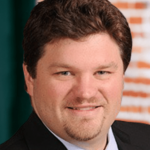 Nick Fitzgerald is the President and Owner of AuDSEO. He also serves as the Chief Marketing Officer at Hearing Health & Technology Matters. With over 15 years of digital marketing experience, Nick is a highly data-driven marketer, with expertise in search engine optimization, digital analytics and forensics, social media, digital advertising, and web development. He has been involved in the construction and optimization of nearly 1,000 web presences, including some of the largest Fortune 500 companies.
Nick Fitzgerald is the President and Owner of AuDSEO. He also serves as the Chief Marketing Officer at Hearing Health & Technology Matters. With over 15 years of digital marketing experience, Nick is a highly data-driven marketer, with expertise in search engine optimization, digital analytics and forensics, social media, digital advertising, and web development. He has been involved in the construction and optimization of nearly 1,000 web presences, including some of the largest Fortune 500 companies.






